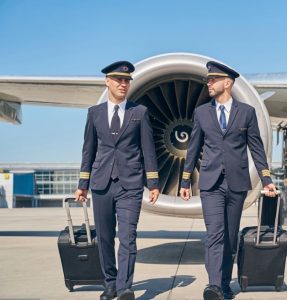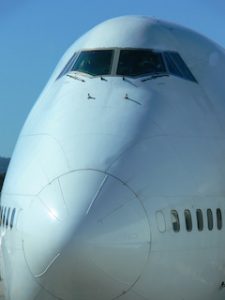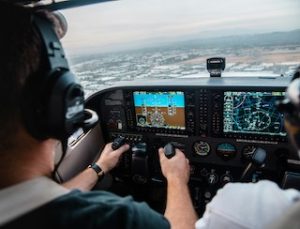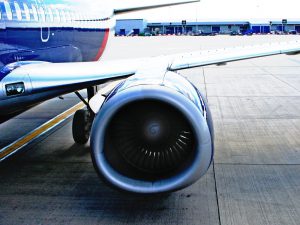Global Demand For Airline Pilots
 The aviation industry is a cornerstone of global transportation, connecting countries, economies, and cultures. As air travel becomes increasingly integral to modern life, the demand for skilled airline pilots continues to rise. This article explores the factors driving the global demand for airline pilots, the implications of this demand, and the strategies required to meet it.
The aviation industry is a cornerstone of global transportation, connecting countries, economies, and cultures. As air travel becomes increasingly integral to modern life, the demand for skilled airline pilots continues to rise. This article explores the factors driving the global demand for airline pilots, the implications of this demand, and the strategies required to meet it.
Historical context and trends
- Growth of commercial aviation: Commercial aviation has grown exponentially since the mid-20th century. The introduction of jet aircraft, deregulation of the airline industry, and globalization have all contributed to an increase in air travel. In the 1970s and 1980s, the expansion of budget airlines made air travel accessible to a broader population, further boosting demand.
- Recent surge in air travel: In the last two decades, the number of passengers traveling by air has seen unprecedented growth. According to the International Air Transport Association, passenger numbers are projected to double from 4 billion in 2017 to 8.2 billion by 2037. This surge is driven by economic growth, urbanisation, and the increasing affordability of air travel, particularly in emerging markets.
Factors driving demand for airline pilots
- Economic growth and rising middle class: Economic growth in developing regions such as Asia, Africa, and Latin America has led to a burgeoning middle class with increased disposable income. This new demographic is driving demand for air travel, both domestically and internationally. Countries like China and India are witnessing rapid growth in their aviation markets, necessitating a significant increase in the number of pilots.
- Expansion of low-cost carriers: The rise of low-cost carriers has revolutionised the airline industry by making air travel more affordable and accessible. LCCs typically operate with high-frequency schedules, which require more pilots to maintain. The expansion of LCCs into new markets continues to drive demand for pilots.
- Fleet expansion and modernisation: Airlines are continuously expanding and modernizing their fleets to meet growing demand and improve efficiency. The introduction of new aircraft models, such as the Boeing 787 Dreamliner and the Airbus A350, has increased the need for pilots trained on these advanced systems. Additionally, the retirement of older aircraft and their replacement with newer models contributes to the demand for pilot training and certification.
- Aging pilot workforce: A significant portion of the current pilot workforce is nearing retirement age. In many regions, regulatory bodies mandate retirement at a certain age, typically around 65. As these experienced pilots retire, there is a pressing need to replace them with new pilots, exacerbating the demand.
- Regulatory and safety requirements: Stringent regulatory and safety requirements necessitate rigorous training and certification for airline pilots. While these regulations are essential for maintaining safety, they also contribute to the length and cost of training, creating a bottleneck in the supply of qualified pilots. Continuous updates to safety protocols and advancements in technology require ongoing training and recertification, further driving demand.
Implications of increasing demand for pilots
- Operational challenges: The rising demand for pilots presents several operational challenges for airlines. Staffing shortages can lead to flight cancellations, delays, and reduced service quality. Airlines may struggle to maintain schedules and meet customer expectations, impacting their reputation and financial performance.
- Financial strain on airlines: The cost of recruiting, training, and retaining pilots is significant. To attract new pilots, airlines often offer competitive salaries, signing bonuses, and attractive benefits packages. These increased costs can strain the financial resources of airlines, particularly those operating on thin profit margins.
- Impact on smaller airlines: Smaller and regional airlines are particularly vulnerable to pilot shortages. With fewer resources to compete with larger carriers for talent, these airlines may face more severe operational disruptions. In some cases, they may be forced to reduce routes or frequencies, impacting connectivity in regional and remote areas.
- Broader economic consequences: The shortage of pilots has broader economic implications. Air travel is a critical driver of global commerce, tourism, and business. Disruptions in air travel can hinder economic growth, affect trade relationships, and reduce tourism revenues. Countries heavily reliant on tourism may experience significant economic setbacks due to pilot shortages.
Strategies to meet the demand for airline pilots
- Enhancing pilot training programs: To address the growing demand for pilots, enhancing and expanding pilot training programs is essential. This includes increasing the capacity of flight schools, investing in state-of-the-art training equipment, and incorporating advanced simulation technologies. Partnerships between airlines and training institutions can create more streamlined and efficient training pathways.
- Financial support and incentives: Reducing the financial barriers to pilot training is crucial. Scholarships, grants, and loan programs can make training more accessible to aspiring pilots. Airlines can offer sponsorship programs, covering training costs in exchange for a commitment to work for the airline for a specified period. Additionally, governments can provide subsidies and incentives to support pilot training initiatives.
- Improving work-life balance: Improving the work-life balance for pilots can help attract and retain talent. Measures such as flexible scheduling, better rest periods, and support for mental health and well-being can make the profession more appealing. Addressing issues such as long commutes and extended time away from home can improve job satisfaction and reduce turnover.
- Promoting diversity and inclusion: Promoting diversity and inclusion in the aviation industry can expand the pool of potential pilots. Outreach programs, mentorship opportunities, and targeted recruitment efforts can encourage a more diverse range of candidates to pursue careers as pilots. Creating a more inclusive culture within the industry can also help retain a diverse workforce.
- Leveraging technology and innovation: Advancements in technology can help address the demand for pilots. Automation and artificial intelligence can assist with certain aspects of flight operations, reducing the workload on pilots. While fully automated commercial flights are not yet a reality, incremental advancements can improve efficiency and safety. Additionally, innovative training methods, such as virtual reality and augmented reality, can enhance pilot training and reduce costs.
- Adjusting regulatory frameworks: While maintaining safety standards is paramount, there may be opportunities to streamline regulatory frameworks to make pilot training more efficient. Regulatory bodies could consider adopting competency-based training and assessment approaches, which focus on the skills and competencies required for safe operations rather than prescribed training hours. Harmonising regulations across regions can also facilitate the mobility of pilots and improve workforce flexibility.
- Encouraging military to civilian transition: Encouraging military pilots to transition to civilian aviation can help alleviate the shortage. Military pilots have extensive training and experience that can be highly valuable in commercial aviation. Streamlined certification processes and incentives for military personnel can facilitate this transition and provide a steady supply of experienced pilots.
Long-term strategic planning
Addressing the demand for airline pilots requires long-term strategic planning by all stakeholders, including airlines, training organisations, regulatory bodies, and governments. A coordinated approach can ensure that the measures implemented are sustainable and effective in the long term.
- Collaboration between airlines and educational institutions: Collaboration between airlines and educational institutions can create a more seamless transition from training to employment. Joint programs can align training curricula with industry needs, ensuring that new pilots are well-prepared for the specific demands of their future roles. Apprenticeship models, where trainees gain practical experience while completing their education, can also be beneficial.
- Global initiatives and partnerships: Global initiatives and partnerships can play a crucial role in addressing the demand for pilots. International organisations, such as the IATA and the International Civil Aviation Organisation, can facilitate cooperation between countries and regions. Sharing best practices, harmonising standards, and supporting cross-border training programs can enhance the global supply of pilots.
Addressing the pilot demand
The global demand for airline pilots is a complex and multifaceted issue with far-reaching implications for the aviation industry and the broader economy. Addressing this demand requires a comprehensive approach, involving enhancements in training programs, financial support for aspiring pilots, improvements in work-life balance, promotion of diversity and inclusion, leveraging technology and innovation, and strategic collaboration between stakeholders. By implementing these solutions, the aviation industry can ensure a sustainable and robust pilot workforce, enabling continued growth and connectivity in the years to come.










